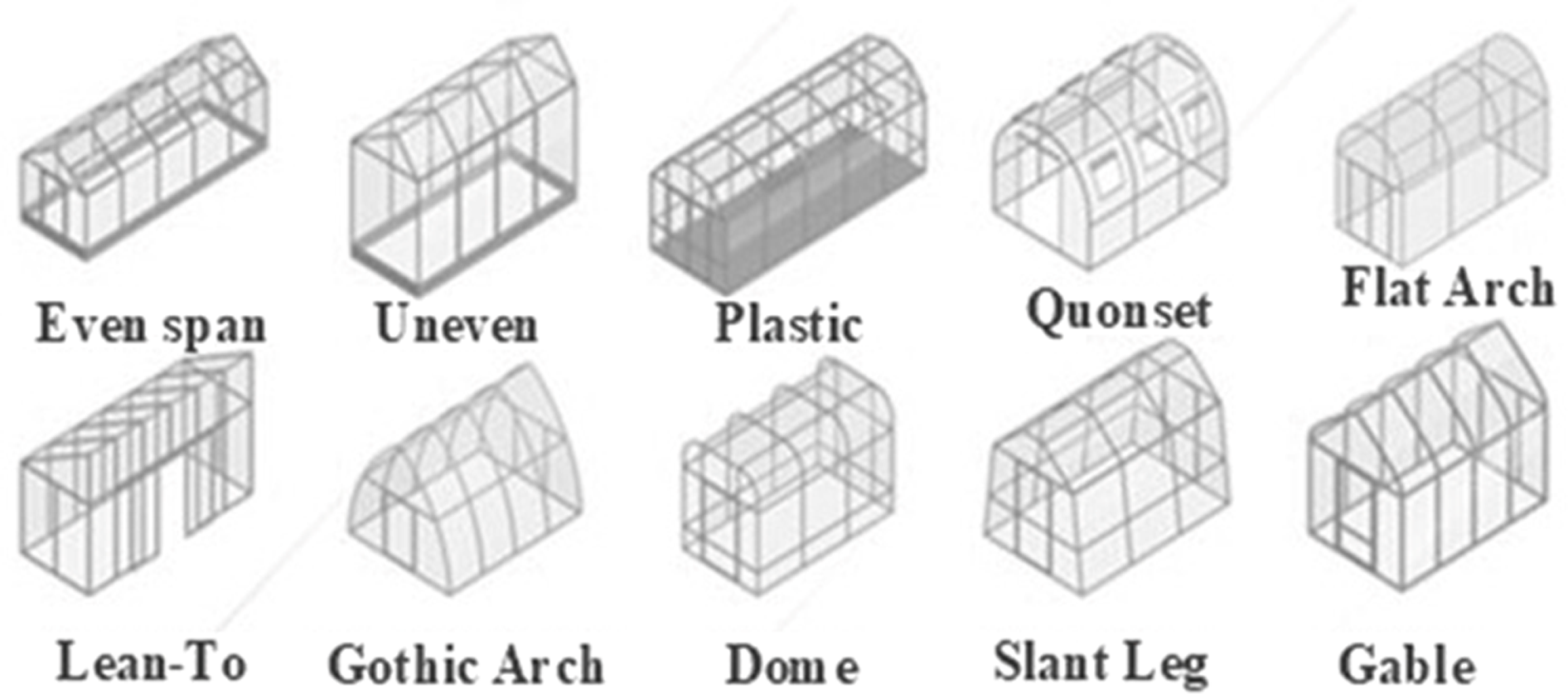Not known Details About Greenhouse Construction
Table of ContentsThe smart Trick of Greenhouse Construction That Nobody is DiscussingThe Main Principles Of Greenhouse Construction Not known Factual Statements About Greenhouse Construction Top Guidelines Of Greenhouse ConstructionGetting The Greenhouse Construction To WorkLittle Known Questions About Greenhouse Construction.

If you live in a snowy or wet area, gothic arch greenhouses are a wonderful financial investment for you due to the fact that their design permits rainfall and snow to easily slide off the sides which protects against damages to the whole greenhouse. Traditional A-Frame greenhouses have actually high, slanted sides. They are a little bit harder to heat due to this.
Barn-Style greenhouses, like their name implies, appear like a barn. They have straight walls; therefore, they make excellent use of space. An even-span greenhouse is a full-size structure that has actually one end affixed to one more structure. The reason it is called even-span is because the sides are both also.
See This Report on Greenhouse Construction
When selecting a greenhouse for your garden, it is very important for you to learn the benefits and drawbacks of each greenhouse, so that the greenhouse fits ideal with your area and lifestyle. Check out our digital book to find out more and photos of each kind of greenhouse.
Generally, the next step after selecting a greenhouse is choosing the structure or base upon which the framework will stand. With your environment and soil conditions in mind, there are many different types of greenhouse bases that you can choose from. The primary benefit of installing a base is cold and thawing the soil, which moves over time and may affect the greenhouse framework (5-7 years).
These legs will hold the greenhouse; however, it does not get to the frost degree for most cool locations, which's where a greenhouse base is something you may consider. Keep in mind that mounting a base is optional, but we advise doing so to expand the greenhouse lifespan. Planta Greenhouses's sturdy galvanized steel (rust and dust resistant) makes the model durable and resilient.
The Best Guide To Greenhouse Construction
While the greenhouse structure can last for 20+ years, the polycarbonate panels will certainly last for as much as 15 years, whereupon you can replace with brand-new ones and mount them on the existing frame. Contact our client service to figure out exactly how you can buy individual Recommended Site polycarbonate panels. No matter which base you're choosing to set up, pin it to the ground to stop high winds from lifting the whole framework off the ground.

We have actually organized them from sturdiest to the very least strong + pros/cons: A concrete slab base is the most resilient foundation for a greenhouse. It does need planning and labour in advance, yet once it's full, you can fail to remember about logistics and concentrate on expanding your food. This base will certainly provide maximum sturdiness to the greenhouse.
Top Guidelines Of Greenhouse Construction
Rats will certainly not be able to passage inside the concrete base. Standing water might be an issue since it can just drain around the sides of the greenhouse base.
A concrete base is one of the most pricey choice yet the most economical lengthy term. When all shuttering is established to put the concrete inside, it is fairly very easy to construct. It is likewise possible to utilize more durable mendings, such as growth bolts, to hold the greenhouse base in location.
The greenhouse is detachable, you won't be able to relocate the base with it. A wood base is an outstanding strong structure to construct your greenhouse on.
Greenhouse Construction Can Be Fun For Anyone
Pressure-treated woods have chemicals contributed to them which can seep right into the dirt and influence your plants; nevertheless, if you opt for normally rot-resistant wood (i. e. cedar or redwood), it won't happen yet will be more expensive. Not as durable as concrete. In the lengthy term, wood is much more mould-prone unless it is rot-resistant or pressure-treated.
Another alternative is to build a strong border for the steel find more base to rest on. The finest method to install your greenhouse over a perimeter base is to place the structure on the outdoors side.
Prior to beginning, mark the steel base's dimension on the ground using spray paint to make certain that the top fits the bottom neatly. It is a good option in situations where the ground isn't entirely levelled, and you intend to save the extra work of levelling whatever out in advance. You can adjust the elevation of your greenhouse based upon the base you're going to opt for (most convenient to do with a wood boundary base) Low-cost yet tough as a wood base.
8 Simple Techniques For Greenhouse Construction
If the slabs (or blocks) aren't protected firmly (using a cement mixture), the whole structure might fall down. We don't recommend laying blocks or slabs website here on sand alone, as it will clean away at some point and make the base unpredictable. It's important to have the appropriate measurements as there is no room for error.
If prolonging the elevated bed from the ground, ensure you remove any kind of roots that may hinder expanding your plants in the lengthy run. The most significant problem with the raised foundation is that you may require to shift the greenhouse door, make an added custom-made one or make an action to get in.